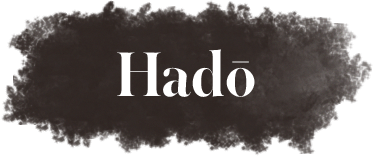
Hoshindo


The Meaning of Hoshindo
Translation is an art as much as it is a science. There are cultural nuances that may or may not be captured when describing meaning across languages. Such is the case here. From Japanese to English, Hoshindo translates to “the way of the vibrating honey bee stinger.” I describe this practice as Japanese meridian api-immunotherapy. “Api” refers to the honey bee, and “immunotherapy” refers to a therapy that activates the immune system. The word “meridian” refers to channels that direct the flow of energy throughout the body. In Eastern medicine, this energy is Ki, meaning that which provides life force and bridges the gap between the physical and non-physical so that the body and mind function harmoniously.
The Api-tapping Method and Practice of Hoshindo
Receiving Hoshindo is nothing like being stung by a honey bee. The Hoshindo practitioner applies microdoses of live bee venom to specific sites on the body through a gentle tapping method with the stinger of the bee. The barbed stinger catches only the epidermis, the outermost layer of skin, which acts like a blotter to absorb a micro-drop of bee venom.
In Hoshindo, disease is thought to manifest in the meridians as imbalances of Ki or life force energy. By using the barbed stinger of the honey bee, a Hoshindo practitioner activates or inhibits the flow of Ki and blood, stimulating an immune response at a specific area. Health, in Hoshindo, is seen as a dynamic balance characterized by smooth and flowing movement. When Ki and blood stagnate, illness occurs. Hoshindo aims to overcome this stagnation. In addition to bee venom, Hoshindo uses bee pollen, royal jelly, honey, and propolis i.e. all of the natural hive medicines.
Conditions Supported and/or Alleviated
- Arthritis, fractures/sprains, chronic pain
- Autoimmune diseases
- Multiple sclerosis
- Rheumatoid arthritis
- Lupus
- Ankylosing spondylitis
- Fibromyalgia
- Vitiligo
- Cognitive dysfunction
- Depression, disconnection to self and spirit
- Emotional dysregulation
- General health and wellness upkeep
- Hair loss
- Hormone imbalance
- Immune system dysregulation
- Infertility
- Injuries
- Low energy
- Lyme disease, co-infections
- Migraines, chronic headaches
- Neurodegenerative diseases
- Alzheimer’s
- Parkinson’s
- Amyotrophic Lateral Sclerosis
- Neuropathy
- Sciatica
- Skin lesions, burns
- Stress, anxiety
- Tinnitus
- Vision disorders
- Wound healing, scars
- Wrinkles, fine lines
The Taoist Origins of Hoshindo and Lineage of the Americas
Many cultures have history with the honey bee and have utilized the products of the hive, including honey, bee venom, propolis, and royal jelly, for medicinal and nutritional purposes.
Taoism, an indigenous tradition of China, emphasizes the interconnectedness of all things. By studying the stars and nature, which they believed had a special relationship, Taoists created unique practices that combined science, art, and medicine.
For nearly 4,000 years, people in China studied the medicines of the honey bee, developing energy meridians, channels that spread life-force energy throughout the body, and tsubos, their access points. The gradual rise of high-quality bronze metallurgy during the Shang Dynasty led to the creation of acupuncture as a parallel path to apitherapy. The metal needles of acupuncture mimicked the sting of the honey bee and moxa the heat from the venom.
1200 years ago, during the Tang Dynasty, Japan sent official missions to adopt and adapt aspects of Chinese culture. Over several hundred years, Japanese emissaries brought back 6,500 new kanji or Chinese characters, an expanded knowledge of herbs, and the studies of acupuncture and bee venom therapy. However, Mongol invasions of China during the Song Dynasty sent emissaries home, and Japan entered a period of self-isolation. This allowed for the dissemination and customizing of the practices studied in China to a burgeoning Japanese society. Thus, from Taoist origins to Chinese apitherapy, Hoshindo came to be. As such, acupuncture became Hari, and herbal medicine became Kampo.
In the mid-1990s, Voyce Durling-Jones traveled to Japan and through a series of events became the first and only westerner to study and pass the national Hoshindo board examinations. With the encouragement of her sensei, Voyce brought Hoshindo first to the Cree people in remote areas of Canada and then to the states where she practiced up until her death in 2022.
Voyce Sensei founded the Hoshindo Healing Arts Institute and the Hoshindo Society of the Americas, both based in Santa Fe, New Mexico, and began teaching Hoshindo in 2000. In 2022, Voyce Sensei appointed her students Michael Basil Webb, based in Colorado, and Lisa Bartosiewicz, based in Nevada, as senseis and Hoshindo lineage carriers in the Americas.
First Api-aid
In the event of an acute injury or pain, established patients may receive First Api-aid. First Api-aid utilizes Hoshindo for shorter visits that require targeted care. However, First Api-aid is not a substitute for life-saving emergency medicine which requires a hospital visit and care from a medical doctor. Inquire for additional details!
More Information

